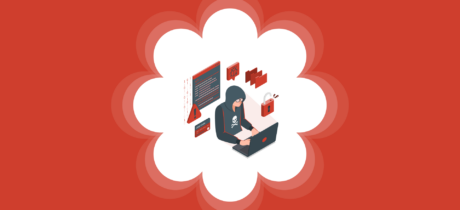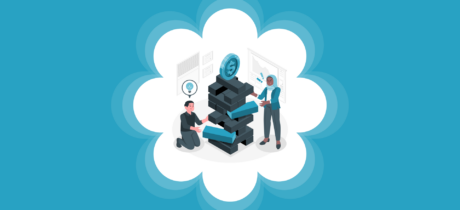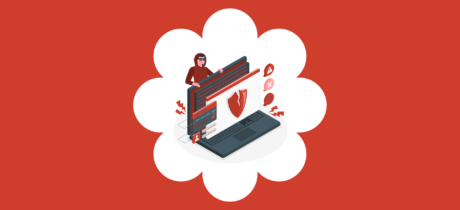
Malware Prevention: Best Ways to Stop Malware Attack
Table of Contents
Malware refers to any programs or software that is designed to infect computer systems. Malware tends to steal or encrypt crucial data, hijack critical system functions, monitor activity in a network without permission, or extort money in exchange for stolen data.
Malware is an immense menace to organizations since they affect smooth workflow, affects customer trust, and reputation. Moreover, it could lead to untold financial losses in ransom payments in the case of ransomware.
Essentially, malware is distributed through fake internet advertisements, rogue email attachments, and infected applications. Additionally, various malware include worms, trojan horses, spyware, computer viruses, adware, and rogueware.
So, how would you tell that you have malware in your systems?
There are several symptoms that systems infected with malware showcase. Granted, your computer systems and network may not exhibit all these symptoms, but if you notice any of these, it could mean that you might have been infected:
- Your systems are unusually slow or frozen.
- Regular system crashes.
- Icons, files, or folders on your computer that you did not install.
- Lots of spam and pop-up ads.
- Redirection from known websites to other unknown ones.
Malware Attack Prevention
A majority of data breaches involve malware. Therefore, organizations need to be proactive in finding ways to prevent malware attacks. Here are some malware prevention techniques:
Use Reliable Antivirus/Anti-Malware Software
Antivirus and anti-malware tools help to recognize and secure endpoint devices within a network from several malware-related threats. They scan computer files for any suspicious activity and remove any malware they detect. Different anti-malware tools offer different levels of protection.
There is browser-level anti-malware protection which constitutes tools found within a browser that protect users from online threats. They ensure that any malware from the browser does not reach your computer system. However, they do not scan your computer for possible malware but are only on the browser end.
Network-level anti-malware protection protect systems from any malware attacks coming from the network traffic.
Server-level anti-malware protection helps to secure servers from viruses and other threats.
User device level anti-malware protection is software that one downloads onto their devices. They check for malware and notify users of any threats. The user can choose either to remove or to quarantine them.
Antivirus and anti-malware tools are excellent at keeping malware at bay. Just ensure that you constantly update the security tools and perform regular audits of your files to identify any unauthorized additions or missing data.
You could also secure your network and system perimeters using firewalls. Firewalls offer an additional layer of protection for networks and devices.
They create a protective barrier between your IT infrastructure and the internet. That makes them helpful in blocking any malicious activities before they cause any potential harm.
Firewalls also make it possible for users to choose the type of traffic to allow and which traffic to block.
Ensure that your Hardware and Software are Up to Date
Software vendors are constantly providing patches to stitch up any vulnerabilities. In addition, software and hardware updates help in protecting against newer threats. Therefore, it is always a good practice to ensure that your software, hardware, browsers, operating systems, and plug-ins are running on the latest versions.
Conduct routine maintenance to ensure that none of your software is running on an outdated version. Unfortunately, most people tend to postpone making these updates. Cybercriminals leverage that to introduce malware through these vulnerabilities. To prevent malware attacks, ensure that you roll out updates as soon as they are available.
Use Secure Authentication Methods & Upgrade Your Password Standards
Authentication ensures that unauthorized users do not access confidential information. Most cybercriminals tend to steal credentials to infiltrate systems and inject malware. Using secure authentication methods is an excellent way to prevent malware attacks.
Ensure that you use strong passwords. You could opt for paraphrases instead of passwords since they are more secure. If you find it hard to remember passwords, you could get a password manager.
Using two-factor or multifactor authentication ensures that there are various identification factors other than a password or passcode. You could also use biometric tools like facial recognition and fingerprints. Always be careful that you do not save passwords on your computer or network.
Use SSL Certificate
Most cybercriminals using malware tend to intercept data when on transit. As a result, they could hijack sensitive data while it is being transmitted across the internet. One way to prevent malware attacks from these channels is by ensuring that your connections are encrypted.
With an encrypted connection, any conversations between a server and a website are secure. An SSL certificate creates an encrypted connection between a website and the users’ servers. Most browsers incentivize security by branding websites without SSL certificates as non-secure.
Before choosing an SSL certificate, you should think about different SSL types including single domain, multi-domain SSL, Wildcard SSL, etc that can fulfill your website requirement. You can find affordable or cheap SSL in the market from reputed SSL providers.
Do not Call Fake Tech Support.
Several tech support scammers tend to trick people into thinking they have a dangerous problem with their computers. They then ask you to pay for tech support that you may not need. In addition, some tech support scammers pretend to be technicians from reputable companies.
Some introduce pop-up windows on your computer that may seem to be coming from your Anti-virus company or operating system. Others lure users by using logos from reputable companies.
Introducing these malicious tech support guys to your system could lead to the introduction of malware to your computer systems or network. A malware attack prevention tip to protect against such scammers ensures that you only use trusted people and software companies when you have a problem.
Conclusion:
Your malware prevention tactics are only as good as your weakest links. Employees and other users tend to be a major vulnerability. You, therefore, need to grow awareness of malware attacks.
Educate your users on the best practices and other cybersecurity trends. Train your users on how to identify credible sites and steps to take when they spot suspicious activity. Only then will you have a robust malware prevention strategy.







